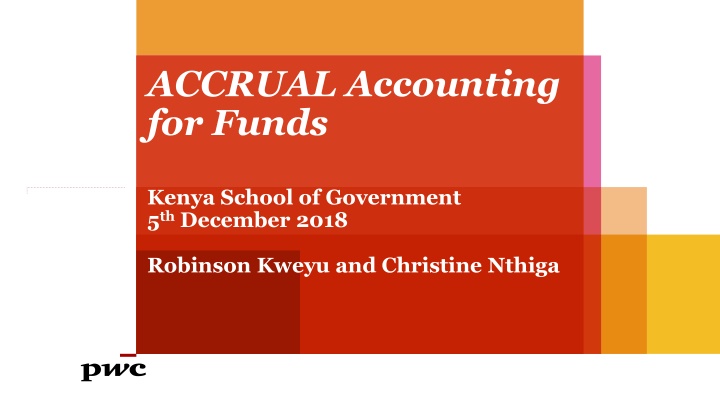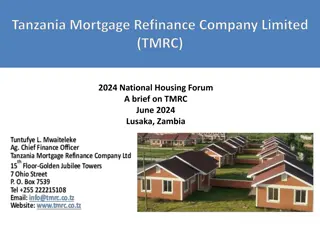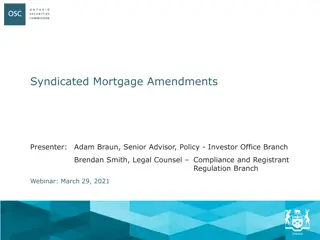HUD 184 Program: Mortgage Loan Opportunities for Native Americans
Explores the HUD 184 Program providing mortgage loan opportunities for Native Americans, tribes, and Housing Authorities. Covering unique land statuses, varied housing markets, government relationships, and the application process through participating lenders.
Download Presentation

Please find below an Image/Link to download the presentation.
The content on the website is provided AS IS for your information and personal use only. It may not be sold, licensed, or shared on other websites without obtaining consent from the author.If you encounter any issues during the download, it is possible that the publisher has removed the file from their server.
You are allowed to download the files provided on this website for personal or commercial use, subject to the condition that they are used lawfully. All files are the property of their respective owners.
The content on the website is provided AS IS for your information and personal use only. It may not be sold, licensed, or shared on other websites without obtaining consent from the author.
E N D
Presentation Transcript
ACCRUAL Accounting for Funds Kenya School of Government 5thDecember 2018 Robinson Kweyu and Christine Nthiga
Overview of the Presentation Introduction Fund Accounting Primary Financial Statements Financial Records to be maintained by a Fund Key sections of financial statements Issues Raised by OAG on Funds
Introduction Section 167 of the PFM Act, 2012 requires the Administrator of a County Public fund established by the Constitution, an Act of Parliament or County Legislation to prepare financial statements for the Fund for each financial year in a form prescribed by PSASB. The financial statements should be submitted to the Auditor General by 30th September with a copy of the report to the CEC member responsible for that Fund. Section 168 requires the Administrator to also prepare quarterly reports and submit to the County Treasury within 15 days after the end of each quarter with a copy to the Controller of Budget.
Fund Accounting Fund Accounting is the process of recording, measuring and reporting financial transactions relating to Funds. Funds are accounted for using the Accrual basis of accounting. In Kenya, the PSASB has prescribed the International Public Sector Accounting Standards (IPSAS) as the accounting framework for public entities. Consequently, Funds should be accounted for using the IPSAS Accrual accounting standards. This is in accordance with section 2.2.2 of Gazette Notice No 5440.
TYPES OF FUNDS What type of funds do we have in Counties?
TYPES OF FUNDS Revolving funds e.g. Car and Mortgage, Non Revolving funds e.g. Bursary, Emergency Strictly private and confidential Draft 19 April 2016 PwC
Journal Entries Whether loan is given or loan is taken, it is a must to record it in books because given loan is our asset and taken loan is our liability. Moreover on the basis of outstanding balance, interest is calculated and it is paid by borrower to lender. So, for knowing actual balance of loan outstanding, we need to pass journal entries.
In the Books of Lender When loan is given by a Lender ( e.g Car and Mortgage) Dr. Borrower's Loan Account Cr. Bank Account In the eyes of the borrower; ( Logic : Cash though banks will come in the business which is our asset. It is increase of asset in the business. So, Bank account Debit . Lender's Loan is our liability. It is increase in existed liability, so this account will credit. ) When loan is received by borrower Dr. Bank Account Cr. Lender's Loan Account
In the Books of Lender When Lender has right to get interest on given loan Dr. Interest on Loan Receivable Account Cr. Interest Account In the eyes of the borrower; When Borrower is responsible for paying Interest on Loan Dr. Interest Account Cr. Interest on Loan Payable Account
In the Books of Lender When Lender receives interest from borrower Dr. Bank Account Cr. Interest on Loan Receivable Account In the eyes of the borrower; When Borrower pays the interest to Lender Dr. Interest on Loan Payable Account Cr. Bank Account Credit
In the Books of Lender When Borrower repays his loan. (a) If there is no interest receivable on loan. Dr. Bank Account Cr. Borrower's Loan Account In the eyes of the borrower; When Borrower repays his loan. (a) If there is no interest liability on loan. Dr. Lender's Loan Account Cr. Bank Account Credit
In the Books of Lender When Borrower repays his loan. (b) If there is any interest receivable on given loan (i) Dr. Borrower's Loan Account Cr. Interest on Loan Receivable Account Credit (ii) Dr. Bank Account ( Principle + Receivable Interest) Cr. Borrower's Loan Account
In the Books of Lender When Borrower repays his loan. ( In the borrower s books) (b) If there is any interest liability on loan (i) Dr. Interest on Loan Payable Account Cr. Lender's Loan Account Credit (ii) Dr. Lender's Loan Account ( Principle + Payable Interest) Cr. Bank Account
Accounting for Revenue The main type of revenue for funds is interest income. This is regulated by IPSAS 9: Revenue from exchange transactions Exchange transaction - one entity receives assets or services, or has liabilities extinguished, and directly gives approximately equal value (primarily in the form of cash, goods, services, or use of assets) to another entity in exchange. Key considerations: Revenue should be accounted for in the period to which it relates; Interest income should be apportioned on a time basis taking into accounting the effective yield on the loan A receivable should be booked for earned revenue but not yet received.
Accounting for Expenses Expenses arising from exchange transactions: purchase of goods and services at arm s length conditions, such as maintenance services, consulting services, subscriptions, cleaning services and insurance fees. Expenses should be measured at the fair value of the consideration paid, or payable, taking into account the amount of any trade discounts and volume rebates granted to the entity. Expenses must be recorded in the accounting period in which they are incurred. If a service was rendered (or supplies were delivered) but the invoice has not yet been received - accrued expenses; If a service was rendered (or supplies were delivered) and the invoice received but payment has not been made- accounts payable; If a payment has been made and the service was not rendered (or supplies were not delivered) - prepayments. - If a payment has been made and the service was rendered (or supplies were delivered) book the expense and credit the cash book
Accounting for Fixed Assets IPSAS 17: Property, Plant and Equipment. An item of PP&E shall be recognized as an asset if: it is probable that future economic benefits or service potential associated with the item will flow to the entity; the cost or fair value of the item can be measured reliably. The date of acquisition is the date on which the risks and rewards pertaining to ownership get transferred -generally corresponds to the acceptance of delivery of the asset. PPE is initially measured at acquisition. Depreciation method (and useful life) used should reflect the pattern in which the asset's economic benefits or service potential are consumed.
Financial Records to be maintained Examples of key records to be maintained by a fund include: Loan disbursement schedule showing amount of loans disbursed, interest earned, principal repaid and outstanding balance; Bank reconciliation statements; Schedules of fund expenses and income earned; Support documentation for expenses and income for the fund; Asset register for the fund; This list is not comprehensive and there are other records necessary for the maintenance of fund s financial records.
Fund Accounting Primary Financial Statements Include: Statement of financial performance Statement of financial position Statement of changes in net assets Statement of cash flows Statement of comparison of budget and actual amounts Notes to the Financial Statements
Primary Financial Statements IPSAS 1 and IPSAS 2 (cash flow statement) 01 Thefollowing should be presented on the face of the FS at a minimum: Revenue, Finance Costs, Surplus or deficit for the period. Expenses may be presented by their nature or function. Further sub-classification is possible if it is relevant. Statement of financial performance 02 The following should be presented on the face of the FS at a minimum: Assets, Liabilities, Net Assets/Equity. Further sub-classification is possible if relevant. Assets and Liabilities should be split into Current and Non Current . Statement of financial position 03 This shows the fluctuations in the net wealth of the entity. For each component of the net assets/equity, a reconciliation between the carrying amount at the beginning and the end of the period. Statement of Changes in net assets/equity
Primary Financial Statements IPSAS 1 and IPSAS 2 (cash flow statement) 04 It represents the cash inflows and cash outflows by category (operating, investing and financing). Cash comprises of cash on hand and demand deposits. Cash equivalents are short term, highly liquid investments that are readily convertible to known amounts of cash. Cash flow statement (IPSAS 2) 05 The statement is a comparison of budget and actual shows the level of budget utilization in a given period. It should be presented for all entities that make their budgets publicly available. Statement of comparison of budget and actual (IPSAS 24) 06 Includes a summary of significant accounting policies applied by the fund, statement of compliance with IPSAS and other explanatory notes. Notes to the Financial Statements
Key Sections of Fund Financial Statements Key Entity Information and Management The Fund Administration Committee The Fund Management Team Report of the Fund Administrator Statement of Financial Performance Statement of Financial Position Statement of changes in net assets/equity Statement of cash flows Statement of comparison of budget and actual amounts Notes to the financial statements Progress on follow up of auditor recommendations
Issues raised by OAG on funds Issue Action Accounting/Non Accounting Unrecovered loans arrears in case of car loan and mortgage scheme funds Non Accounting Ensure that all arrears are paid in full and on time, as and when they fall due Use of principal funds on recurrent expenditures the expenditure should not exceed the net interest earned (interest earned from funds less withholding tax) Non Accounting Principal loan repayments should only be used to reduce the loan balance and not to finance recurrent expenditure Huge borrowings from the MCA s car and mortgage fund by the Assembly with irregular payments Non Accounting Ensure that all borrowings are related to the fund and well supported Non compliance with revolving fund principles which dictate that the at the end of the MCA s term, the fund balance should be equal to the initial funds disbursed from the CRF Non Accounting Ensure compliance with the regulations Unsupported expenditures various expenditures whose supporting documents were not availed for audit verification Non Accounting Avail all supporting documentation for audit
Issues raised by OAG on funds (Continued) Action Issue Accounting/Non Accounting Long outstanding items - payment in the bank statements and not in cashbook Non Accounting Follow up on the long outstanding items and ensure that they clear from the bank reconciliations Issues of completeness and accuracy fund account balance Accounting Maintain proper records and financial information Ascertaining the recoverability of short term debtors Non Accounting Come up with a follow up plan on all debtors Misclassification of interest accrued and receivables as a short - term debt Accounting Interest accrued and receivables are assets to the fund and should be appropriately classified as such Irregular transfer of funds from the fund account Non Accounting Ensure that all transfers are fund- related Variance between cash and cash equivalents as per the financial statements and bank confirmation certificate Accounting Ascertain accuracy of the bank reconciliation statement
Feedback Questions and Feedback























